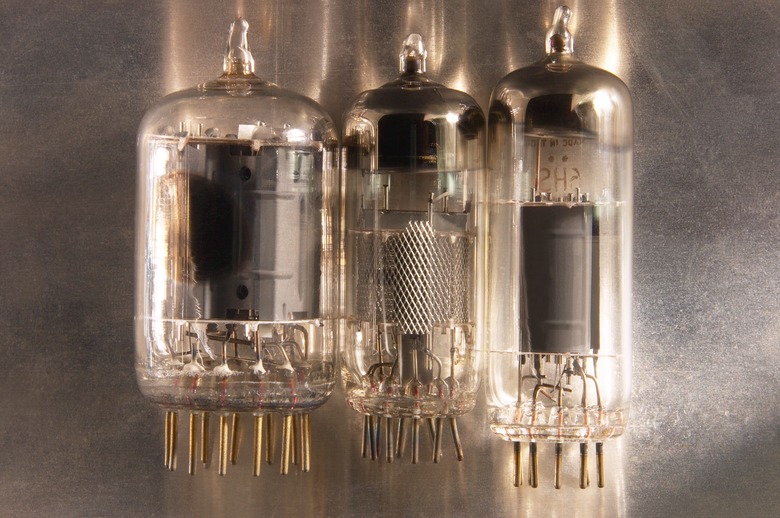How To Wire LEDs For 12V
Light Emitting Diodes (LED's) are the small lights commonly used in electronics. LED's emit a single wavelength (color) of light, with a brightness proportional to the current supplied.
Various styles of LEDs have different operating specifications. LEDs can be ran off multiple voltages, but a series resistor is required to limit the current in the circuit. Too much current in an LED will destroy the device.
As with all diodes, LED's will only allow current to flow in the direction from the anode to the cathode.
Step 1
Examine the specification sheet for the LEDs which you wish to use in your circuit. Determine the values for maximum forward current (If) and typical forward voltage drop (Vf).
Step 2
Calculate the voltage drop required across the resistor. This will equal the 12 volts supplied minus the forward drop across the LED.
Vres=12 volts – Vf
If there are two or more diodes in the circuit, add all the forward voltages together and subtract the sum from 12 volts.
Step 3
Calculate the current through the series resistor. The maximum current will be governed by the amount of current the LED can tolerate, specified as If.
For reliable operation, choose a current equal to 60% of the LED's maximum allowable current.
Step 4
Determine the value of the series resistor.
Example: Determine the resistor required for an LED with If = 20mA and Vf = 2V
Vres=12 volt supply – 2 volts (Vf) Vres=10 volts
Rseries=Vres/Ires Rseries=10 volts / (60% X 20mA) Rseries = 833 ohms
Step 5
Resistors are commonly available in standard 5% values (E24 series of resistors). Choose the next highest value of standard resistor. A list of E24 resistors is found in the resources section.
Example: 833 ohms.
The next highest value is 910 ohms.
Step 6
Connect the positive terminal of the 12 volt power supply to one side of the resistor.
Step 7
Connect the other side of the resistor to the anode of the LED.
Check the LED data sheet to identify the anode and cathode. The cathode is commonly the shorter lead and located nearest any flat side of the LED.
Step 8
Connect the cathode of the LED to the negative terminal on the 12 volt power supply.
Things Needed
- LED and Datasheet
- 12 volt Direct Current (DC) supply
- Resistor
- Wire
- Calculator
TL;DR (Too Long; Didn't Read)
If the LED does not light, try turning it around. There is no danger in reversing the LED connections, but it will only light in the proper orientation.
If the LED is exceedingly dim, try a smaller value resistor.
Supplying more current than the LED can safely handle, the result of too small a resistor value, will destroy the LED. LEDs can not be repaired.
Warning
Depending upon the color and size of LED, the voltage drops and maximum currents can be significantly different.
References
- "Simple, Low Cost Electronics Projects;" Fred Blechman; 1998
Cite This Article
MLA
Hazleton, Andrew. "How To Wire LEDs For 12V" sciencing.com, https://www.sciencing.com/wire-leds-12v-5743679/. 24 April 2017.
APA
Hazleton, Andrew. (2017, April 24). How To Wire LEDs For 12V. sciencing.com. Retrieved from https://www.sciencing.com/wire-leds-12v-5743679/
Chicago
Hazleton, Andrew. How To Wire LEDs For 12V last modified March 24, 2022. https://www.sciencing.com/wire-leds-12v-5743679/
